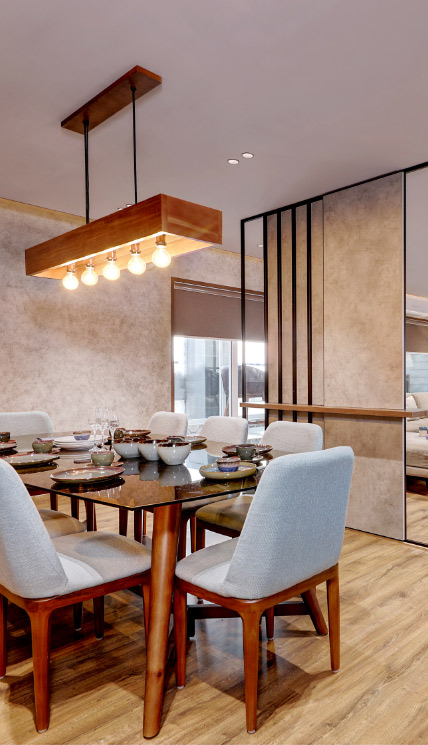Leading interior design firms bring your vision to life.
Leading interior design firms bring your vision to life.
Blog Article
Transform Your Home With Necessary Concepts of Interior Decoration and Appearances
By comprehending the impact of shade concept and the relevance of structure and patterns, one can create rooms that are not only visually enticing yet likewise deeply personal. Attaining this balance involves more than plain decoration; it incorporates a tactical plan and a keen understanding of exactly how each component interacts within a room.
Comprehending Color Theory
Recognizing the concepts of shade concept enables developers to develop areas that reverberate emotionally with occupants while satisfying practical needs. Each category plays an essential duty in developing harmony within a space.
The mental influence of shades is extensive; warm tones such as reds and oranges stimulate power and heat, while awesome tones like blues and environment-friendlies promote calmness and harmony. Additionally, making use of corresponding shades boosts aesthetic passion, developing striking contrasts that can boost a room's charm.
Neutral shades, on the other hand, offer as a versatile backdrop, allowing other style elements to shine. It is crucial to take into consideration aspects such as illumination and the room's function when choosing a color palette, as these can change the understanding of colors throughout the day.
Ultimately, a well-considered color design can transform a space, cultivating a feeling of convenience and design that aligns with the occupants' preferences. Proficiency of shade theory is, for that reason, a vital ability for any indoor developer intending to produce unified and welcoming atmospheres.
Attaining Equilibrium in Style
Exactly how can developers achieve a feeling of balance in their areas? Attaining equilibrium in design is essential to developing unified interiors. Developers can use 3 main kinds of balance: in proportion, unbalanced, and radial. Balanced balance involves setting up elements equally around a main factor, cultivating a sense of order and harmony. This type commonly includes pairs of furnishings or artwork, boosting visual stability.
Unbalanced balance, on the other hand, depends on differing components that still accomplish a natural look. This technique enables more vibrant and informal plans, giving rate of interest while keeping stability. By carefully picking varying dimensions, colors, and appearances, developers can create an aesthetically engaging space that feels well balanced yet energetic.
Radial balance stresses a central centerpiece with components radiating exterior. This style is frequently seen in round layouts, where furniture and decoration develop a natural border that attracts the eye inward.
Eventually, attaining equilibrium requires thoughtful factor to consider of range, percentage, and the relationships between aspects. Architecture Firm. By masterfully applying these balance principles, designers can transform areas into environments that feel both cosmetically pleasing and functionally unified, boosting the total experience for owners
Importance of Spatial Awareness

An eager feeling of spatial recognition permits developers to identify focal factors within a space, assisting the audience's interest to essential features while preserving a general feeling of unity. It additionally helps in the strategic placement of lighting, which can significantly affect the assumption of area and state of mind. Comprehending spatial relationships enables the developer check to provide to the particular needs of inhabitants, making certain that each location serves its intended objective without jeopardizing aesthetic appeals.
Eventually, spatial awareness is critical for making the most of the potential of any kind of interior space. By meticulously thinking about the interplay between dimensions, format, and function, developers can produce environments that not just meet sensible demands but additionally evoke a feeling of comfort and elegance, boosting the general living experience.
Incorporating Appearance and Patterns
Embracing a varied variety of appearances and patterns can considerably improve the aesthetic and tactile allure of an interior area. The strategic usage of different products-- such as timber, metal, textile, and stone-- produces deepness and interest, making a space really feel more inviting and vibrant. Combining smooth surfaces with rough textures can establish an equilibrium that attracts the eye and engages the senses.
When including patterns, think about both scale and repeating. Huge patterns can offer as prime focus, while smaller sized, subtle designs can enhance various other aspects without frustrating the space. Layering patterns, such as pairing flower paddings with striped throws, adds intricacy and a feeling of harmony if performed attentively.
It is likewise critical to keep a natural shade combination, making certain that appearances and patterns collaborate instead than contend for attention. By selecting a couple of vital appearances and patterns, you can produce a merged aesthetic that reflects your individual design while improving the overall ambiance of the room. Inevitably, the mindful unification of these components can transform a mundane room right into an advanced atmosphere rich with personality and warmth.
Personalizing Your Room
Producing an area that reflects your individuality is crucial to achieving an absolutely welcoming environment. Personalization in interior decoration allows you to instill your distinct design and passions right into your home, transforming it from a mere sanctuary right into a sanctuary that speaks with who you are. Begin by choosing a color palette that reverberates with your emotions-- vibrant shades can invigorate, while soft tones offer peace.
Integrate art work and design that mirror your enthusiasms, whether it be traveling, nature, or abstract ideas. Displaying individual collections, such as books, pictures, see page or souvenirs, can evoke valued memories and create centerpieces within a space. In addition, think about tailoring functional items, like upholstered furnishings, to align with your visual choices.

Final Thought
To conclude, the change of a home via the important concepts of interior decoration and visual appeal requires a thorough understanding of color concept, equilibrium, spatial awareness, structure, and customization. Each aspect adds significantly to developing an unified and functional living environment - miami luxury interior design. By attentively incorporating these concepts, people can boost the visual appeal and emotional resonance of their spaces, ultimately fostering a home that shows unique identifications while supplying convenience and usefulness
Report this page